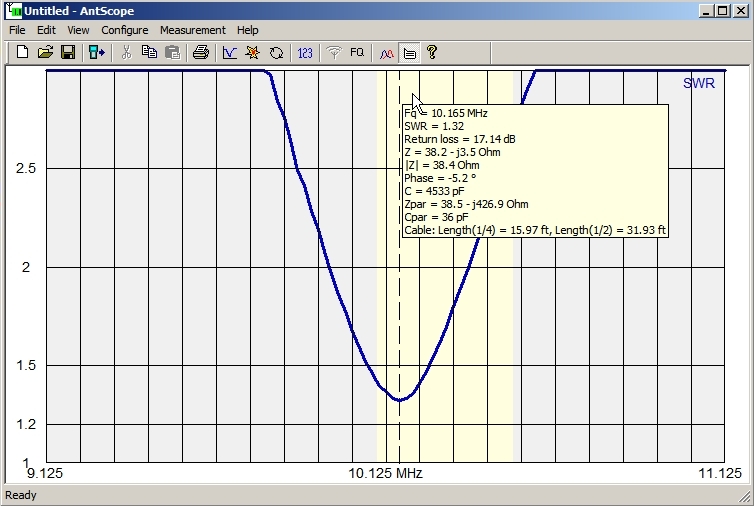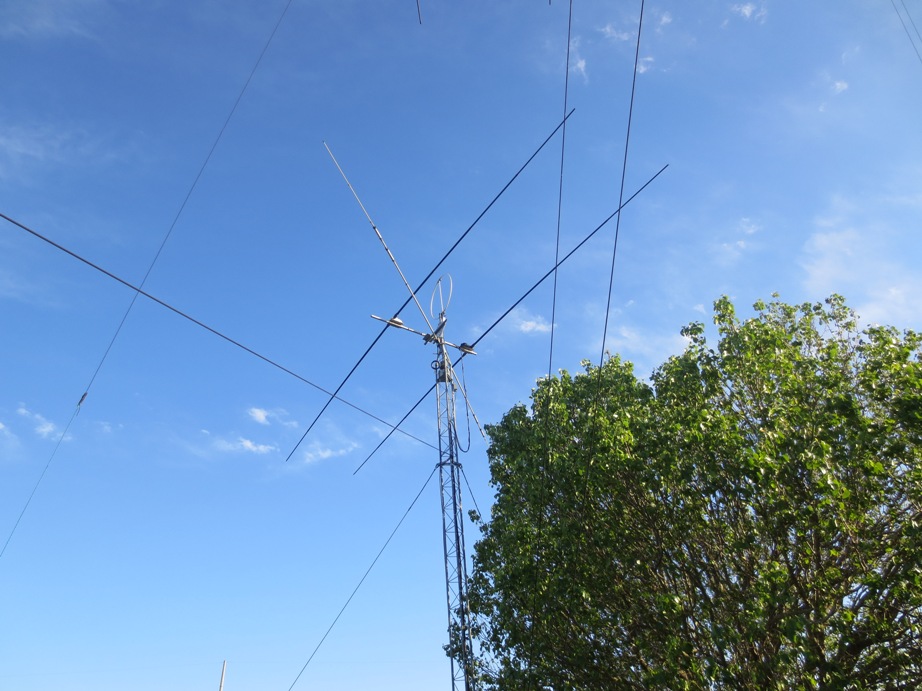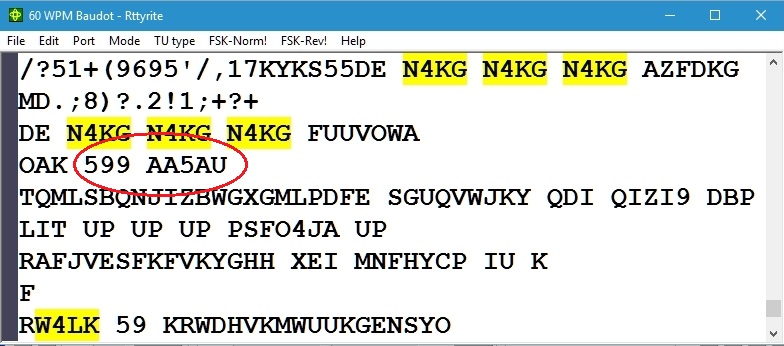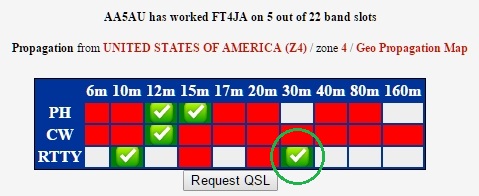On November 28, 2003 at 0444Z, I made a CW contact with TO4E on Europa Island. I know I made this contact because I heard my callsign clearly. In cases where I don’t hear my callsign clearly, I always put a comment in my log that says “not 100% sure”. This contact has no such comment in the log. So I know the contact is good. Unfortunately, the contact was not confirmed via Logbook of the World (LoTW) as my other three contacts on other bands were.
I sent email to the QSL manager but apparently I was not in the log. This is commonly referred to as SNIL’d (Sorry Not in the Log).
So when the FT4JA DXpedition, operating from Juan de Nova Island in the Indian Ocean, started up in March of 2016, I decided I needed to work them on 30 meters to make up for the SNIL’d contact 12 and a half years ago. (Juan de Nova and Europa are separate islands but are consider the same DXCC entity.) The only problem is that I did not have a 30 meter antenna.
I looked at my options. I could either build a 30 meter coaxial inverted vee out of RG6 cable, put my ol’ Cushcraft D3W dipole back up, or reinstall the repaired 30/40 loop dipole back on the 2-element SteppIR yagi. I decided to go with the D3W since it seemed to be the choice that would take less time and less work to install. I found the D3W on saw horses in the side yard. I also found an old homebrew balun (8 – 6″ turns of RG8/U) that was still attached to the feed point of an old Cushcraft A3S tribander driven element. I took the balun off and inspected it. It was still good.
After attaching the balun to the feed point of the D3W, it was ready to go up the tower and test. I mounted it temporarily just below the guy point. I brought up my RigExpert AA-54 antenna analyzer and measured the SWR. The antenna resonated just above 10.150 MHz. Since the entire 30 meter band had an SWR of less than 1.5 to 1, I decided to leave it like it was (see SWR graph in Fig. A below). I then pulled the antenna up to just below the 2-element SteppIR yagi and mounted it to the taper section of the tower (at about 35′) and directed it so that element would face 85 degrees or directly toward Juan de Nova island.

Now I needed a feedline back to the radio room. I went into the garage and found a nice piece of RG-214 coaxial cable that had a brand new PL-259 connector on one end. What luck! I soldered another PL-259 onto the other end of the RG-214 and connected it into a cable that was already run into the radio room. I taped all connectors and the antenna was finished. It took about 3 hours to install and I finished just after 5 PM local time.

I went inside to test the antenna and saw that FT4JA was operating on 30 meter RTTY at that very moment. A quick check of the SWR showed it was less than 1.5:1. FT4JA was transmitting at 10.142 MHz and listening up. I tuned to the frequency and they were fair copy but the pileup was massive. The top edge of the 30 meter band in the USA is 10.150, so there were a lot of stations crammed into 7 kHz. I knew this would not be easy. But I had an antenna!
The other issue with 30 meters is that USA amateur operators are only allowed a maximum of 200 watts output power on that band. My Ameritron AL-80B amplifier works on 30 meters, but just barely. The SWR between the transceiver and the amplifier is high because the input of the amplifier is tuned to 20 meters, not 30. So I’m lucky to get 200 watts output. And besides, the plate inside tube glows slightly dark orange when operating on 30 meter RTTY. RTTY is 100% duty cycle. It can be tough on equipment. Regardless, I decided I needed every bit of signal I could get so I turned on the amp and quickly tuned it up. I got just under 200 watts out of it. I started to call FT4JA. I checked DX Summit to find spots of only FT4JA on 30 meter RTTY to read the comments to see where people were working them. It didn’t matter. They were working them everywhere in that tiny 7 kHz top section of the band. I decided to stay low or high and not in the middle of the pileup.
After about an hour, they stopped transmitting so I took the opportunity to pick up my tools and climbing belt I had left on the back porch. When I got back to the radio room, they were back on so I started calling again. I would occasionally check the 3-500Z tube in the amplifier and it was glowing dark orange. I figured as long as it wasn’t bright orange, I should be OK. I kept calling.
After moving through the pileup nicely for the first hour, their rate slowed way down. I took the opportunity to let the the tube cool off a bit and didn’t call as much. I spent more time listening. They were now working very slowly but they had a decent signal. I could only imagine what they were hearing on their end! Eventually they stopped again. It was just after 7 PM local time so I had been at it for nearly 2 hours. Since the call for dinner hadn’t come yet, I decided to sit and wait. After about ten minutes, they returned and started calling CQ again. They worked a station up 2 kHz and I jumped on the frequency and called. Someone was calling on their frequency and I did not hear them come back to anyone so I just waited and watched the screen when all of a sudden I saw my call across the screens (see Fig C, D & E below). I gave them a signal report and they confirmed it. I MADE THE CONTACT! It was very lucky because N4KG was calling right on top of them. Instead of continuing to call, I waited. They probably came back to me and I didn’t see the first report because of N4KG. By waiting, I was able to see the second report.
I run three decode windows on RTTY. One window is MMTTY (Fig C) and the other two are 2-Tone (Figs D & E).



Luckily I got through when I did. Immediately after I made the contact, FT4JA shut down for a few minutes to refuel their generator and a nasty fight broke out on the frequency. Sharon called me for dinner. I shut the radio off and went to eat. The following day I was able to confirm the contact via their online log.
You just have to love it when a plan comes together!
73, Don AA5AU
